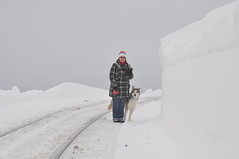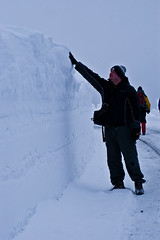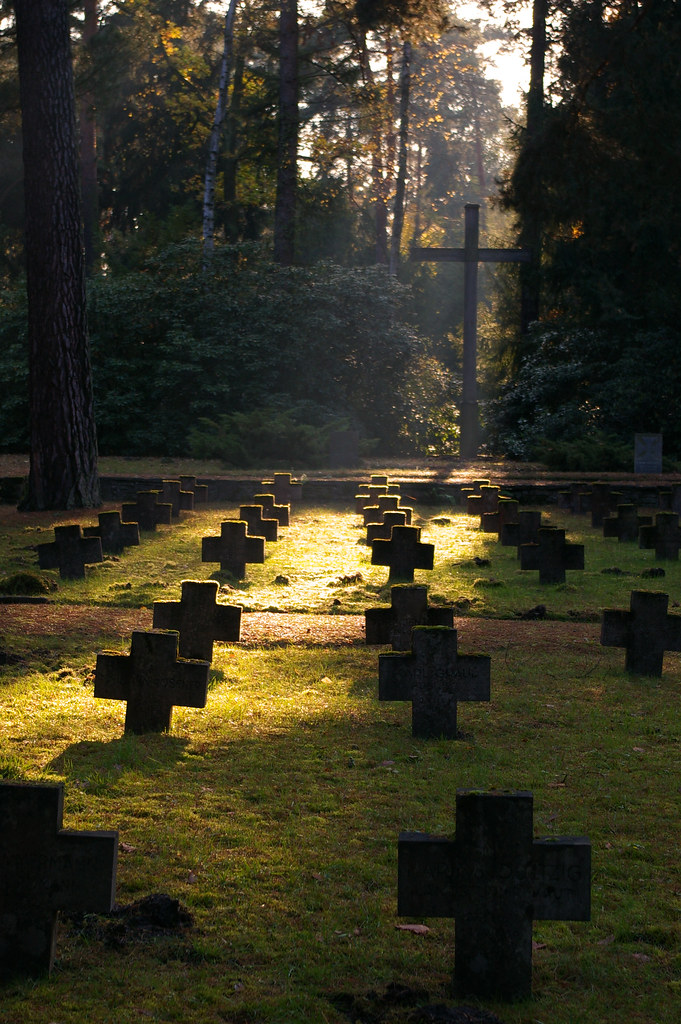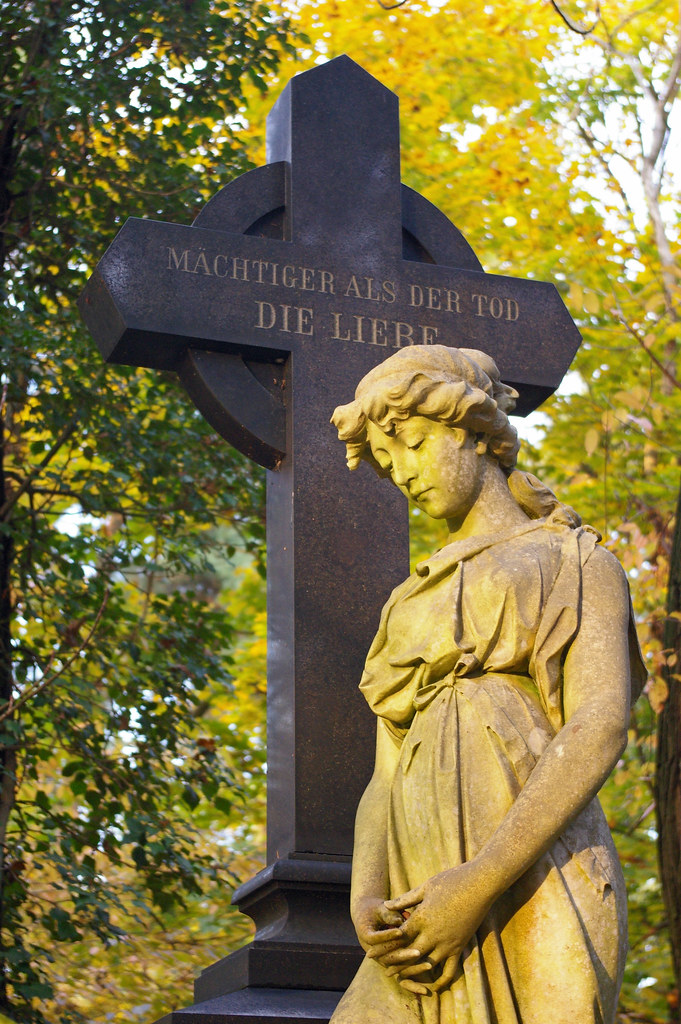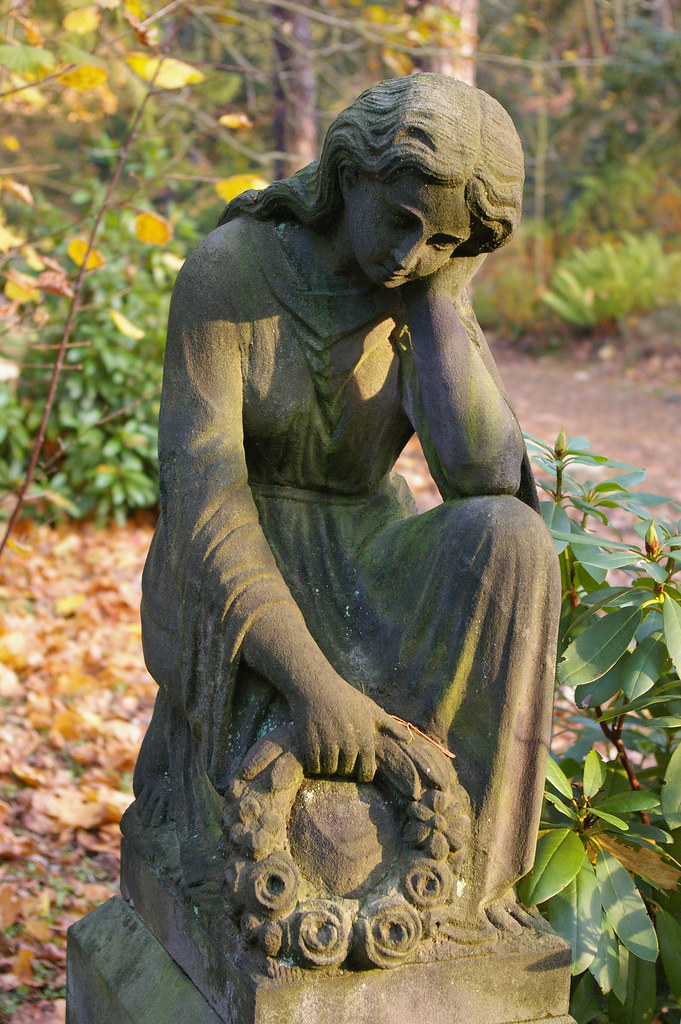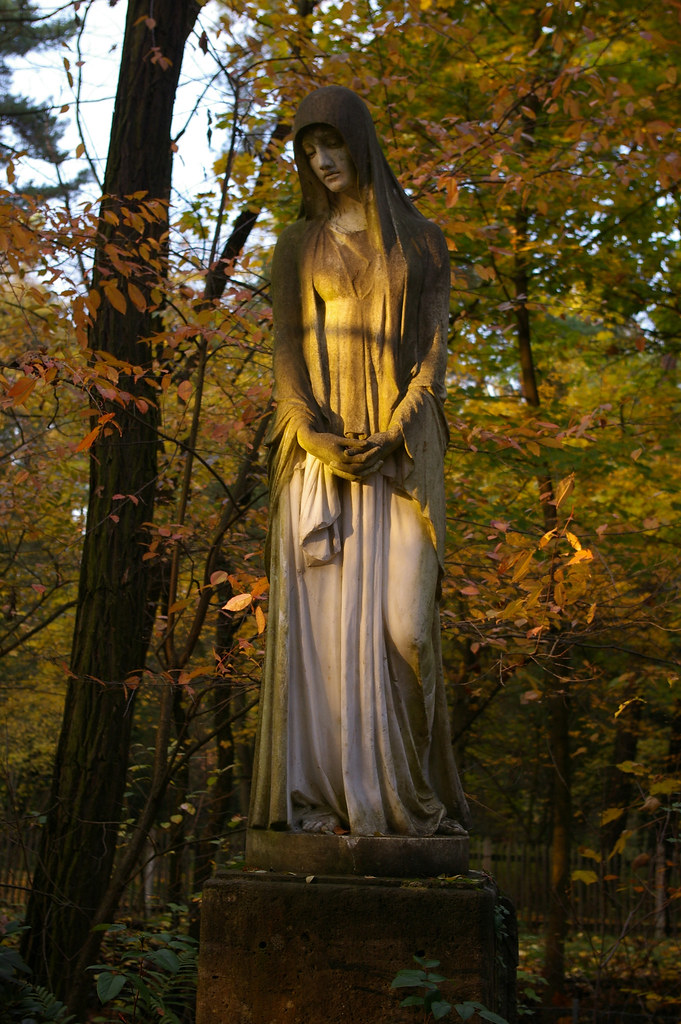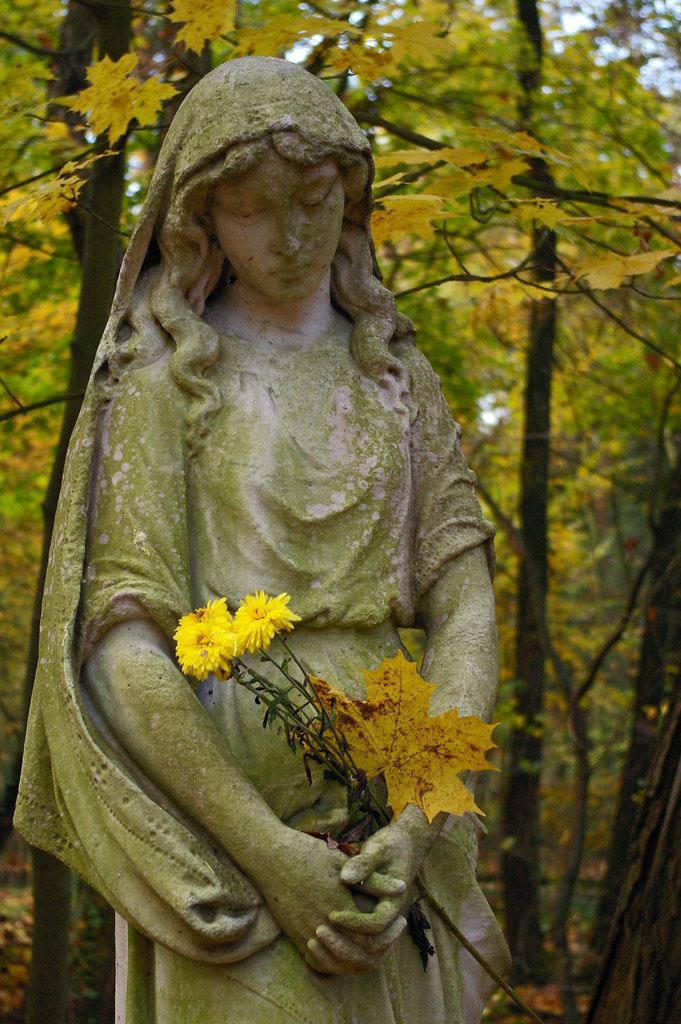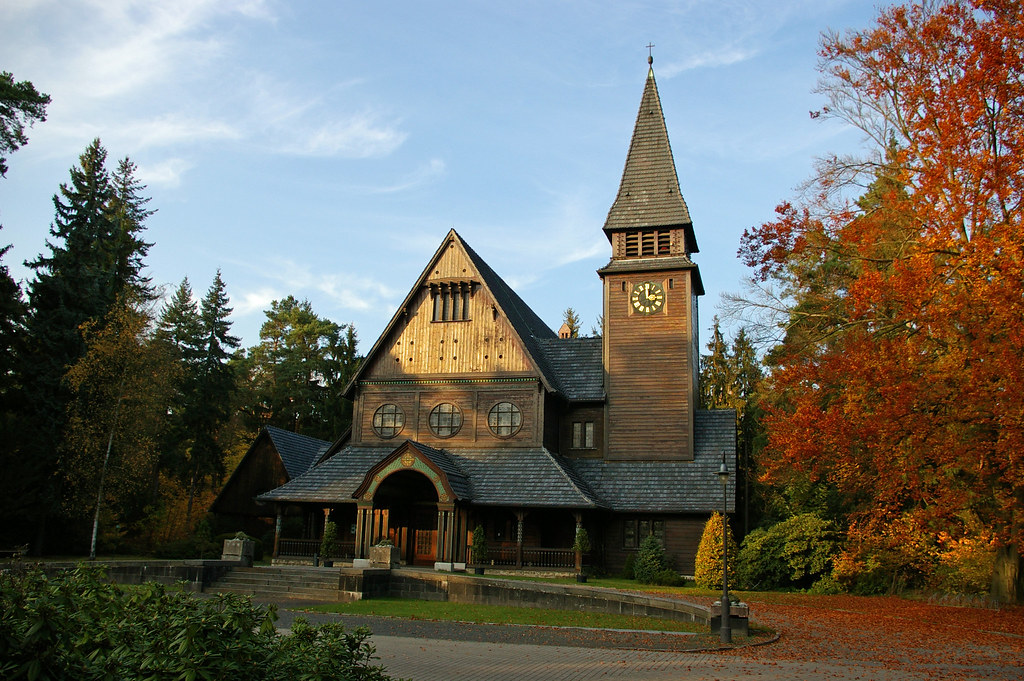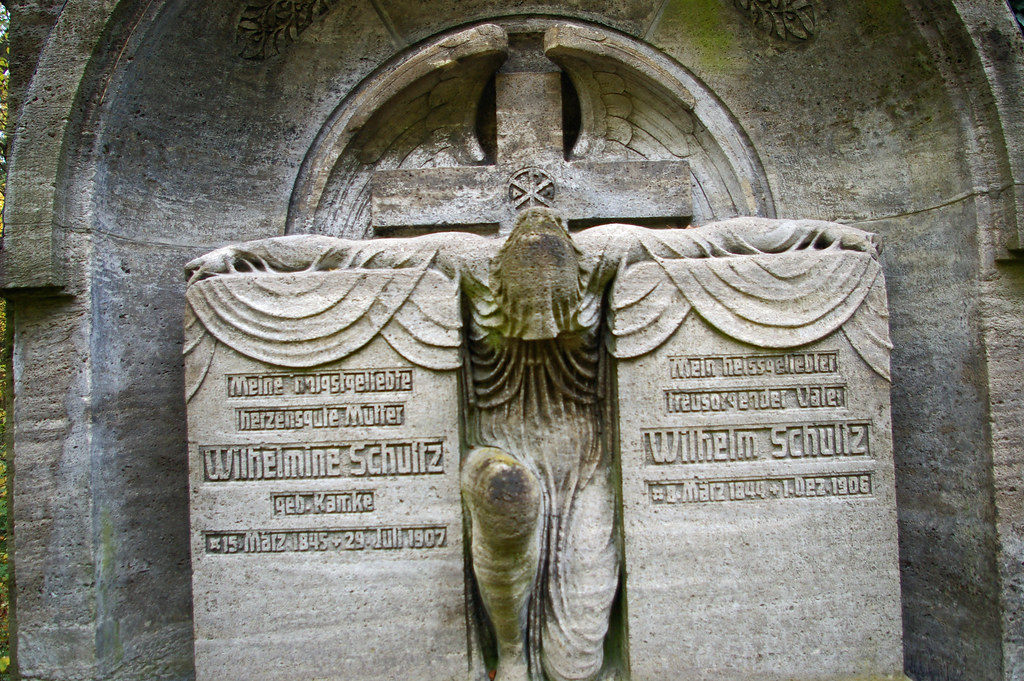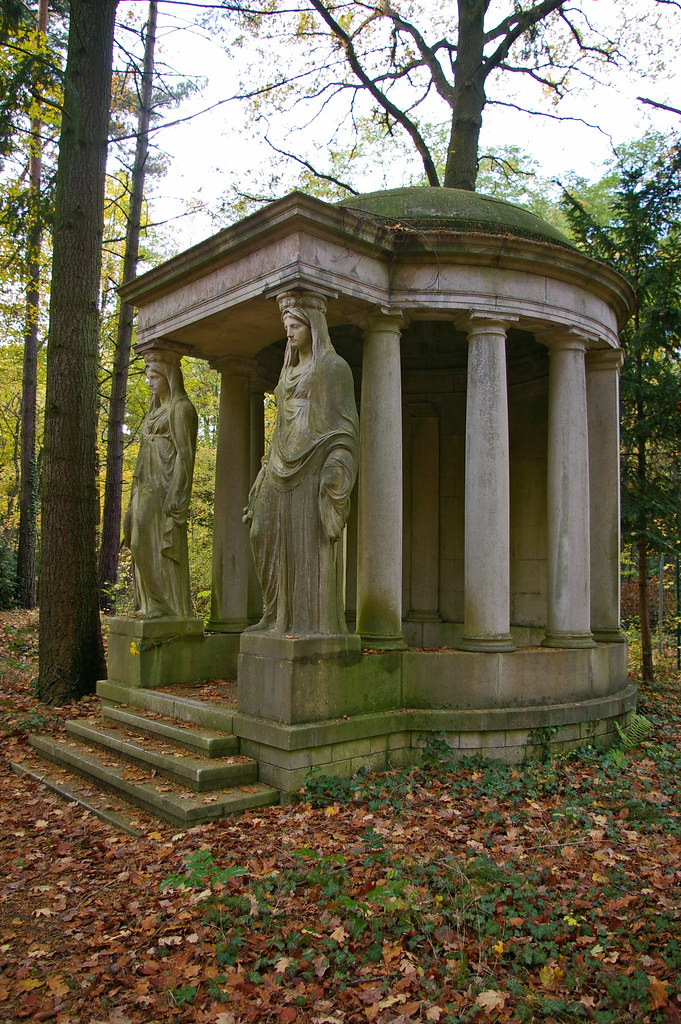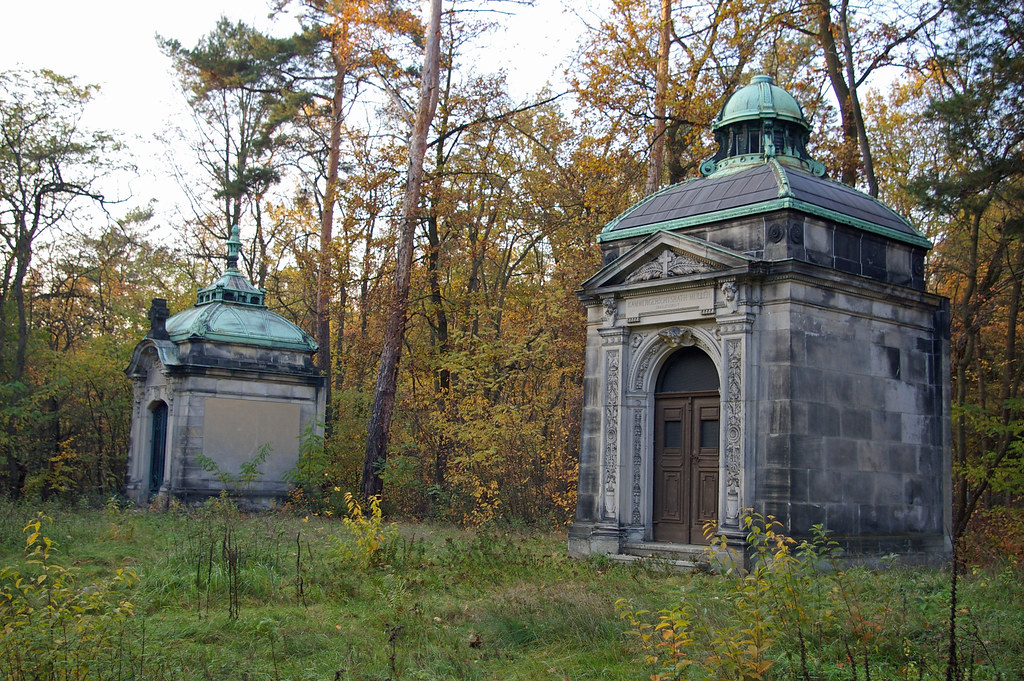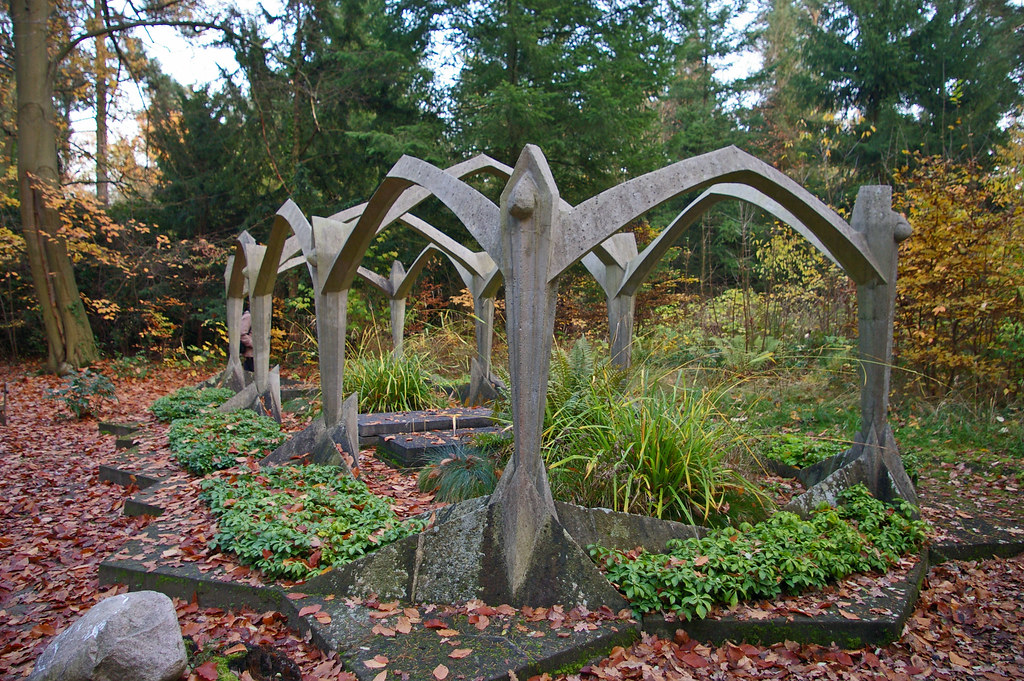** WARNING PHOTO HEAVY PAGE – PLEASE GIVE IT TIME TO LOAD! **
I’m doing a bit of catchup this week on images that really should have been edited and posted by now, but drama at work and in my personal life have been taking their toll. Let’s just say on that front – that there’s been alot of stress, and I’m not going to Dublin, unless I find something else to do (don’t know what that’ll be but pray for me that it all works out for the best, please). At any rate, this weekend, after a couple of days off / out I’m sure I’ll be feeling a bit better, and trying to catch up on my several THOUSAND image backlog. I know that I have a ton of ones from London to get through (unfortunately, one of the SD cards is completely corrupted and I’ve been trying to get them back for a couple weeks) but for now, here’s a few I got put up this week.

This is Brocken, in the Winter. (The blue is the filter / processing I was using because of the cold and brightness.) (A larger size of the panorama can be seen here) It’s the highest point in Northern Germany, and this winter was particularly harsh. The result was that the very top of the peak had over 2 meters (about 8 foot) of snow. The hard part about this trip was that Michael and I had been trying to go up here in the winter since last summer – but we wanted to go when the weather was relatively good and while there was snow on the ground so we could take the dog for a big ‘day out’. For Several weekends through January and into the first week of February, the weather just was too bad (not to mention dangerous) to even think of going up to the mountain and coming back down on foot.
The irony here is that when the weather finally cleared up enough to go – it was Valentine’s Day. We’re both single people, so it was sort of amusing that this is the day we decided to go (Notice the Irony of the name “Brocken” sounding very similar to Broken when pronounced, and it’s in the Harz – heart – mountains?) but we had a great time. It’s about an hour and a half to a two hour drive over to the base town – where we can catch a narrow old-fashioned steam train. It was running late, however, so after a little hike up a hill to the top, we had time for breakfast at the station house – and paused for a few photos while we waited:
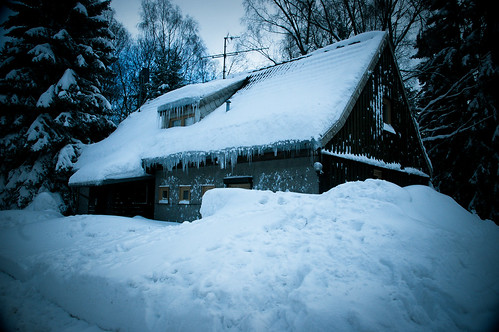
The Station Master’s House (all snowed in with icicles)
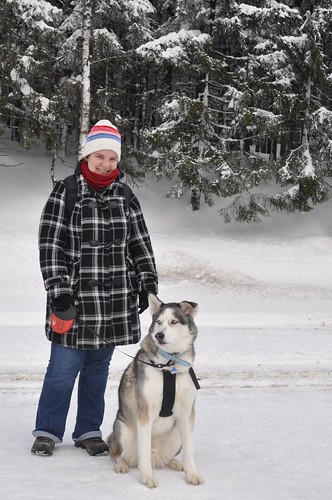
Me & Rids, bundled up and waiting on the train
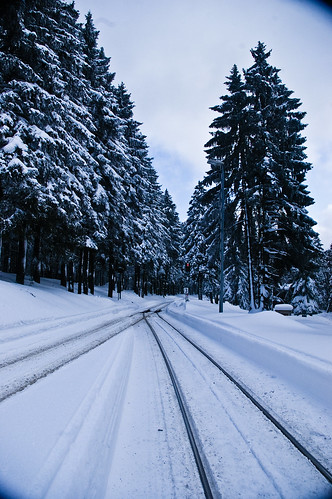
The Train Tracks & Trees
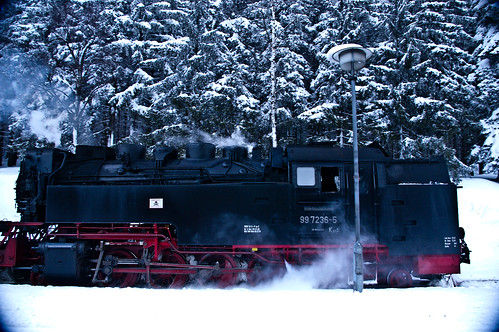
Steam Engine going the opposite way from the one we wanted
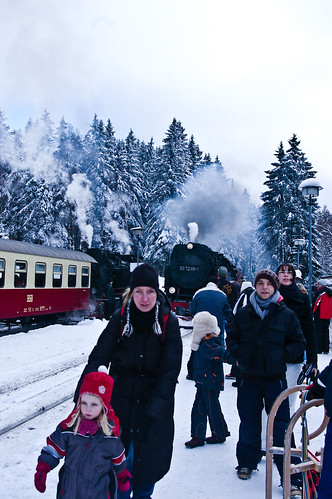
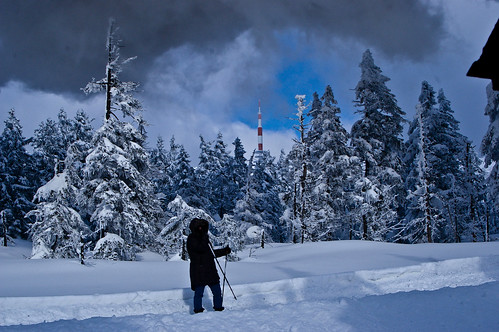
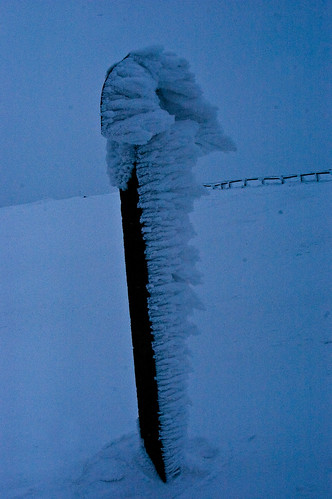
Once we got up to the top, however, and off the train, I can honestly say that both Michael and I were impressed with how deep the snow was – Cut straight through like this (on either side of the train tracks) you could really be amazed. (Michael, below, is 6 foot 2 inches tall for some idea of how high this was)
Once we were done being fascinated with the depth of the snow, I took a few pictures of the weather station, observatory, and radio tower at the top (the weather was starting to turn a bit foggy/snowy)
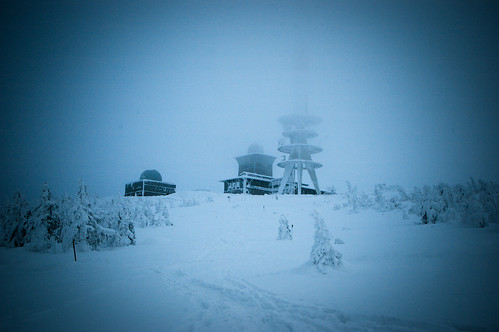
and we began our descent on foot. The strange thing about the descent wasn’t the trudging through the snow
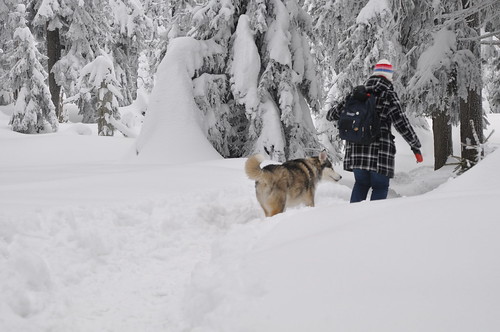
— it was that I kept seeing Yeti all around me – Here’s an entire hurd of them:

And Yet here’s another bunch:
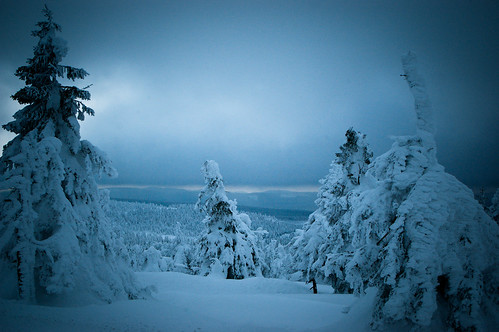
Finally it dawned, on me – these were the trees, covered in hoarfrost, ice, and snow and bent over into all kind of crazy shapes.
Overall, the walk was great – (minus a little twisted ankle and fall on my bum which seems to have bruised my tailbone)
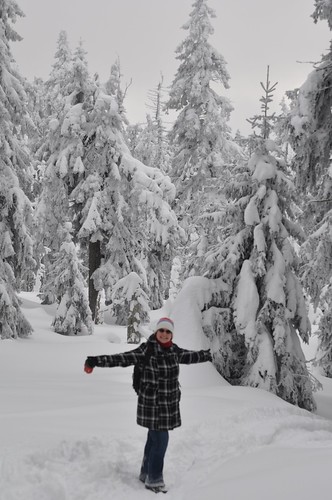
and even my dog (Riddick SnowBeard) seems to have enjoyed it
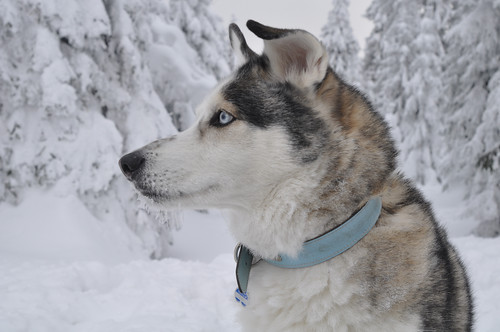
You can see more photos from Brocken from this trip (and the Fall of 2006) here, and in Michael’s set – here. Special thanks to Michael who drove!
